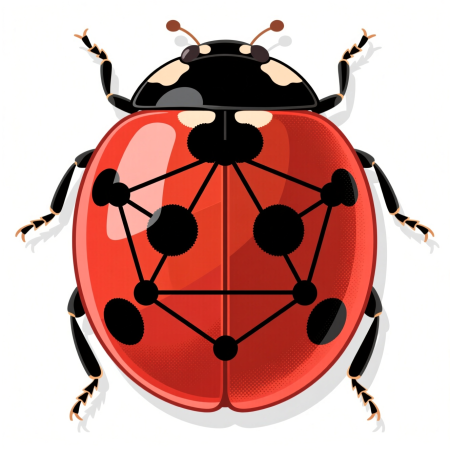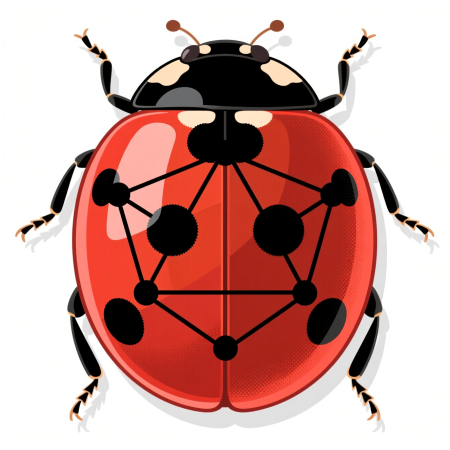Vector types
ValueVector
A value vector is Ladybug’s column-oriented in-memory data structure to store a chunk of data of the same data type. The size of ValueVector is defined by DEFAULT_VECTOR_CAPACITY, which is 2048. This is an empirically selected value with the presumption that the data stored in the value vector will fit into CPU cache.
A value vector has the following core fields:
data: Stores the actual data which is a trivial byte array managed by a unique pointer.nullMask: Aligned withdataand indicates if each entry isNULLor not.auxiliaryBuffer: Keeps track of additional data that does not fit indata.
Primitive Type ValueVector
For primitive data type, we can represent data in the data field, for example, to represent 0 to 99 elements with INT64 data type, data is simply a int64_t[] with size 100.
String Type ValueVector
Earlier versions of the storage layer required each element to have a fixed size. This, however, does not work with the STRING type, whose size may vary. We implement STRING as a 16-byte data structure with the first 8 bytes as prefix and the last 8 bytes as a pointer that points to a memory location storing the rest of the string. The fixed-length part of STRING is stored in data and the overflow part is stored in auxiliaryBuffer.
Nested Type ValueVector
Although nested type value vectors can be organized as overflow in the same way as STRING, we want to utilize the fact that the child type of a nested type is known and can still be stored in a column-oriented value vector.
For STRUCT type, we store child vectors in auxiliaryBuffer.
Example:
Data to represent: [{11,12}, {13,14}, {15,16}]
STRUCT value vector data: [0, 1, 2] // offset auxiliaryBuffer: child vector: data: [11, 13, 15] child vector data: [12, 14, 16]For VAR_LIST type, we store size and offset of each entry in data and elements in auxiliaryBuffer.
Example:
Data to represent: [[10], [11,12], [13,14,15]]
List value vector data: [(0,1), (1,2), (3,3)] // offset,size auxiliaryBuffer: child vector: data: [10,11,12,13,14,15]SelectionState
Selection state keeps track of data that are valid. This is mainly used to select a subset of data (e.g., data that satisfy a filter) without performing a copy.
A selection state has the following core fields:
selectedPositions: a vector ofuint16_tthat maps to a position of thedatavector.selectedSize: size of selected positions
Example:
Value vector data: [10, 11, 12, 13, 14]
Selection state: selectedPositions: [0, 2] selectedSize: 2
Data being represented: [10, 12]DataChunk
A data chunk is a collection of value vectors with the same state.
Example:
Data chunk Value vector: [1, 2, 3] Value vector: [a, b, c]
Data being represented:[(1,a), (2,b), (3,c)]ResultSet
A result set is a collection of data chunks that forms a cartesian product.
Example:
Result set Data chunk Value vector: [1, 2, 3] Value vector: [a, b, c] Data Chunk Value vector: [10, 11]
Data being represented: [(1,a,10), (2,b,10), (3,c,10), (1,a,11), (2,b,11), (3,c,11)]
